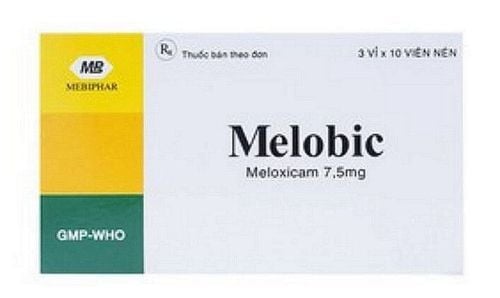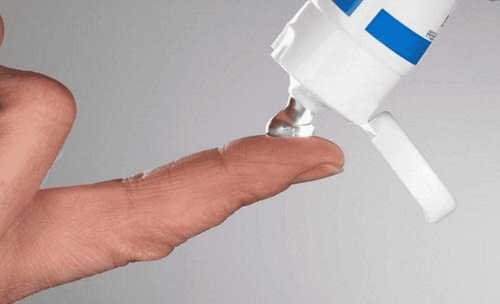This is an automatically translated article.
Hasadolac drug is used in the treatment of osteoarthritis, rheumatoid arthritis. Hasadolac has the main ingredient Etodolac. Let's find out more details about the uses, usage and notes when using Hasadolac through the article below.
1. Indications for the use of Hasadolac
Hasadolac medicine has the main ingredient Etodolac 200mg and other excipients. Hasadolac is used in the following cases:
Hasadolac 200 Oral Symptomatic Treatment of osteoarthritis, acute gout attacks or pseudo-gout, rheumatoid arthritis in adults. Treatment of acute pain in adults such as: Pain after tooth extraction, postoperative pain, pain after episiotomy Hasadolac 300 oral tablet: Acute or long-term treatment of symptoms and signs in degenerative or inflammatory joint disease rheumatoid joint. Hasadolac drug is not used in the following cases:
Patients with hypersensitivity to Etodolac or any other ingredients in the drug. Patients with a history of asthma, urticaria or other allergic-type reactions after taking aspirin or other non-steroidal anti-inflammatory agents. Severe liver/kidney failure. Children under 15 years of age should not take Etodolac because safety and effectiveness in children have not been established. Women in the last 3 months of pregnancy and lactating mothers. When using Etodolac, it is necessary to carefully monitor renal function and urine excretion in patients with heart failure, liver failure, chronic renal failure or patients taking diuretics. The hemoglobin and hematocrit should be checked periodically for signs of anemia, which can sometimes occur in patients taking non-steroidal anti-inflammatory drugs. Patients receiving the drug may give a false-positive reaction for bilirubin - urine due to the presence of phenolic metabolites of etodolac in the urine.
2. Dosage - How to take Hasadolac medicine
2.1. How to take Hasadolac is used orally, should be used during or after meals. Use Hasadolac at the lowest effective dose and for the shortest time to minimize unwanted effects. 2.2. Dosage of Hasadolac 200 Oral Osteoarthritis, Rheumatoid Arthritis: The starting dose is 600-1,000 mg Etodolac/day, divided into small doses (200mg Etodolac x 3-4 times/day or 400mg Etodolac x 2 times/day). ). Adjust Etodolac dose based on clinical response and tolerability. The maximum dose is 1,200 mg Etodolac/day. Pain relief: 200-400mg Etodolac every 6-8 hours, maximum dose is 1,000mg Etodolac/day. Hasadolac 300
oral tablet Adults: 1-2 Hasadolac tablets / day, can be divided into 1-2 times / day. Children: The use of Hasadolac is not recommended in children under 18 years of age. Elderly: There is usually no need to adjust the dose of Hasadolac in the elderly. Older adults are often at higher risk for serious side effects. If it is absolutely necessary to use Hasadolac, the risk of gastrointestinal bleeding should be regularly monitored during treatment with NSAIDs.
3. Hasadolac drug interactions
Hasadolac drugs when combined with some of the following drugs may have drug interactions such as:
Stomach antacids combined with Etodolac may reduce the concentration of Etodolac in the blood. Co-administration of Etodolac with non-steroidal anti-inflammatory drugs or Aspirin may increase the effect of the drug. Co-administration of Etodolac with Warfarin reduces the protein binding of Warfarin. Etodolac when co-administered with Cigoxin, Cycloserin, Cithium, Methotrexate will reduce the clearance of these drugs and increase toxicity. Dosage adjustment of other drugs that are strongly bound to plasma proteins is required because Etodolac is strongly bound to plasma proteins. Analgesics, including selective COX-2 inhibitors, when used concurrently with Etodolac have an increased risk of undesirable effects. Antihypertensive drugs combined with Etodolac will reduce the effectiveness of antihypertensive treatment. Diuretics combined with Etodolac will reduce the diuretic effect. In addition, diuretics may increase the nephrotoxicity of NSAIDs. Cardiac glycosides: NSAIDs may decrease glomerular filtration rate, worsen heart failure, and increase plasma glycosides. Hasadolac combined with Methotrexate, Lithium reduces the excretion of Lithium and Methotrexate. Cyclosporin co-administration with Etodolac increases the risk of Cyclosporin-induced nephrotoxicity. Mifepriston should not be combined with Etodolac within 8-12 days of taking Mifepriston because it may reduce the effectiveness of Mifepriston. Corticosteroids in combination with Etodolac increase the risk of gastrointestinal bleeding or ulceration. Etodolac in combination with anticoagulants may increase the effect of anticoagulants. The combination of NSAIDs and Warfarin prolongs the prothrombin time leading to an increased risk of bleeding. Quinolone antibiotics used with Etodolac increase the risk of seizures in patients receiving concomitant NSAIDs with Quinolone antibiotics. Antiplatelet agents and selective serotonin reuptake inhibitors taken with Etodolac increase the risk of gastrointestinal bleeding. Tacrolimus co-administration with Etodolac increases the risk of nephrotoxicity when combined with NSAIDs. Co-administration of zidovudine with Etodolac increases the risk of hematologic toxicity when used concomitantly with NSAIDs. False-positive results in the Bilirubin test may be possible due to the presence of Phenolic metabolites in the urine.
4. What side effects does Hasadolac cause?
During the use of Hasadolac 200 or Hasadolac 300, patients may experience some unwanted side effects that are usually mild and transient including:
The most common side effects on the gastrointestinal tract: Abdominal pain, diarrhea, constipation, flatulence, dyspepsia, gastrointestinal perforation, gastrointestinal bleeding, nausea/vomiting, peptic ulcer, .. Blood and lymphatic system: Thrombocytopenia, prolonged bleeding time , neutropenia, agranulocytosis, anemia, non-regenerative anemia, hemolytic anemia. Hypersensitivity reactions have been reported with NSAIDs, including: Anaphylaxis, anaphylaxis. Respiratory reactions include asthma, bronchospasm, dyspnea, exacerbation of asthma. Skin disorders: skin rash, pruritus, blistering exfoliative skin disease, urticaria, purpura, angioedema, toxic epidermal necrolysis, erythema multiforme, photosensitivity. Neurological: Depression, tremor, weakness, headache, dizziness, insomnia, somnolence, confusion, hallucinations, disorientation, paresthesia, nervousness, aseptic meningitis (especially in patients with tangles) autoimmune disorders such as systemic lupus erythematosus, mixed connective tissue disorders) with symptoms such as nausea, vomiting, stiff neck, headache. Eyes: Optic neuritis, visual disturbances. Ears and labyrinths: Dizziness, lightheadedness, tinnitus. Patients should inform their doctor or pharmacist of the unwanted effects encountered when using Hasadolac medicine.
5. Precautions when using Hasadolac
Patients should note some of the following before using Hasadolac:
Caution should be used in patients with renal failure, patients with fluid retention, high blood pressure, heart failure, the elderly, and women with children. suck. Use with caution in patients with a history of peptic ulcer, gastrointestinal bleeding.
Please dial HOTLINE for more information or register for an appointment HERE. Download MyVinmec app to make appointments faster and to manage your bookings easily.













